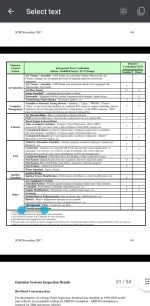I'm not too concerned about engine wear - the car will likely be sold/traded before 200k anyway. Probably 150K.
I'm glad that you have finally, after an almost 2 yr saga, decided to up the viscosity.
This is the sad reality of what goes on out there. Owners follow the owners manual like it is an order from God and then the vehicle little by little starts to consume oil to the point where it is no longer tolerable, and the owner trades it.
The low tension rings installed for several years by Subaru back then were the culprit here, but from what I have read on European Subaru forums, despite them, consumption problems were not present where owners had just ignored the
recommendation to use 0w20, for longer intervals, and used a heavier 5w30, 0w30 0w40 etc.
Lets not forget the deleted documents from Subaru.jp that stated specifically that 0w20 was for fuel efficiency only at the compromise of engine protection.
These Subaru engines run very happy, long lives on Euro spec xW30 xW40.
What are Euro oils are called in Europe?
Oil. A 5w30 over there is usually not the same resource conserving oil that will shear out of grade as quickly. No surprise they are not running into oil consumption problems over there.


